Cedric Herzet
State-Of-The-Art Algorithms For Low-Rank Dynamic Mode Decomposition
Aug 20, 2021Abstract:This technical note reviews sate-of-the-art algorithms for linear approximation of high-dimensional dynamical systems using low-rank dynamic mode decomposition (DMD). While repeating several parts of our article "low-rank dynamic mode decomposition: an exact and tractable solution", this work provides additional details useful for building a comprehensive picture of state-of-the-art methods.
Generalized Kernel-Based Dynamic Mode Decomposition
Feb 11, 2020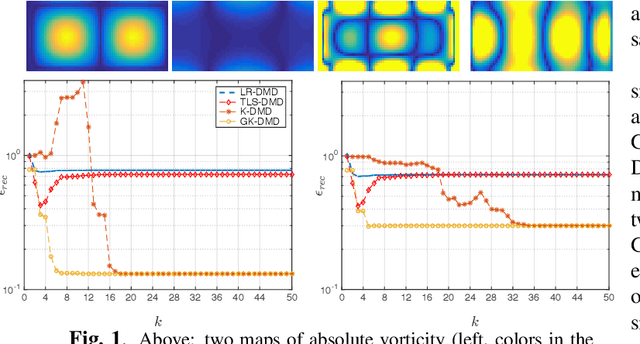
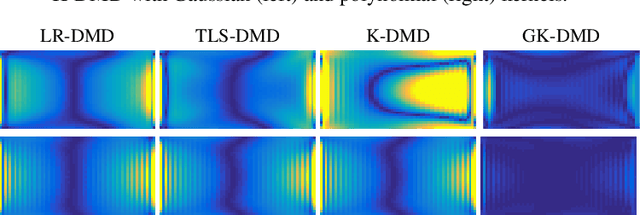
Abstract:Reduced modeling in high-dimensional reproducing kernel Hilbert spaces offers the opportunity to approximate efficiently non-linear dynamics. In this work, we devise an algorithm based on low rank constraint optimization and kernel-based computation that generalizes a recent approach called "kernel-based dynamic mode decomposition". This new algorithm is characterized by a gain in approximation accuracy, as evidenced by numerical simulations, and in computational complexity.
Low-rank Approximation of Linear Maps
Dec 21, 2018Abstract:This work provides closed-form solutions and minimal achievable errors for a large class of low-rank approximation problems in Hilbert spaces. The proposed theorem generalizes to the case of linear bounded operators and p-th Schatten norms previous results obtained in the finite dimensional case for the Frobenius norm. The theorem is illustrated in various settings, including low-rank approximation problems with respect to the trace norm, the 2-induced norm or the Hilbert-Schmidt norm. The theorem provides also the basics for the design of tractable algorithms for kernel-based or continuous DMD
Sea surface temperature prediction and reconstruction using patch-level neural network representations
Jun 01, 2018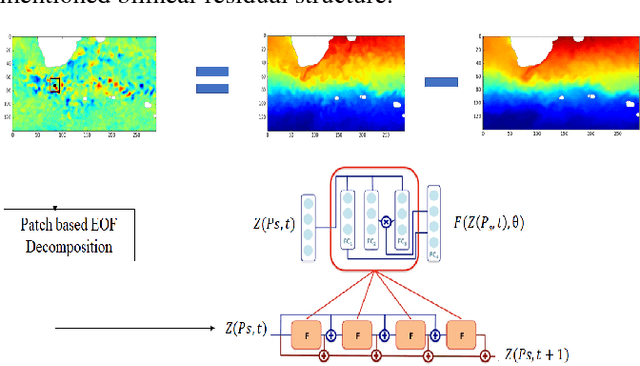
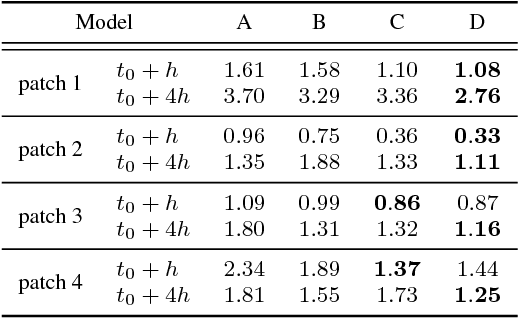


Abstract:The forecasting and reconstruction of ocean and atmosphere dynamics from satellite observation time series are key challenges. While model-driven representations remain the classic approaches, data-driven representations become more and more appealing to benefit from available large-scale observation and simulation datasets. In this work we investigate the relevance of recently introduced bilinear residual neural network representations, which mimic numerical integration schemes such as Runge-Kutta, for the forecasting and assimilation of geophysical fields from satellite-derived remote sensing data. As a case-study, we consider satellite-derived Sea Surface Temperature time series off South Africa, which involves intense and complex upper ocean dynamics. Our numerical experiments demonstrate that the proposed patch-level neural-network-based representations outperform other data-driven models, including analog schemes, both in terms of forecasting and missing data interpolation performance with a relative gain up to 50\% for highly dynamic areas.
Bilinear residual Neural Network for the identification and forecasting of dynamical systems
Dec 19, 2017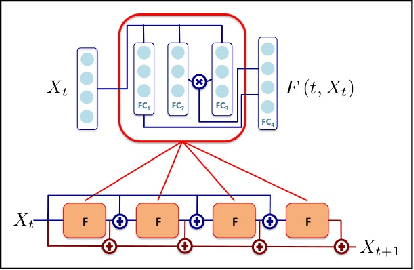
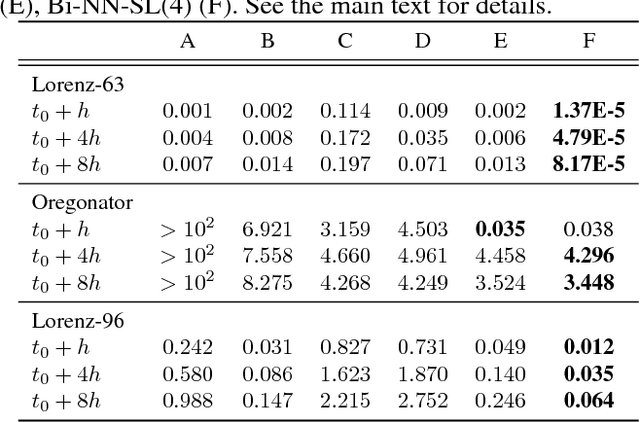
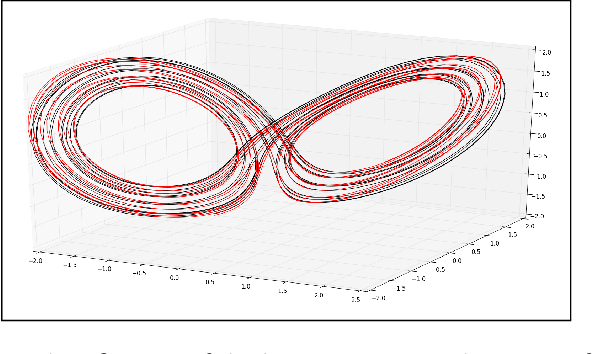

Abstract:Due to the increasing availability of large-scale observation and simulation datasets, data-driven representations arise as efficient and relevant computation representations of dynamical systems for a wide range of applications, where model-driven models based on ordinary differential equation remain the state-of-the-art approaches. In this work, we investigate neural networks (NN) as physically-sound data-driven representations of such systems. Reinterpreting Runge-Kutta methods as graphical models, we consider a residual NN architecture and introduce bilinear layers to embed non-linearities which are intrinsic features of dynamical systems. From numerical experiments for classic dynamical systems, we demonstrate the relevance of the proposed NN-based architecture both in terms of forecasting performance and model identification.
 Add to Chrome
Add to Chrome Add to Firefox
Add to Firefox Add to Edge
Add to Edge